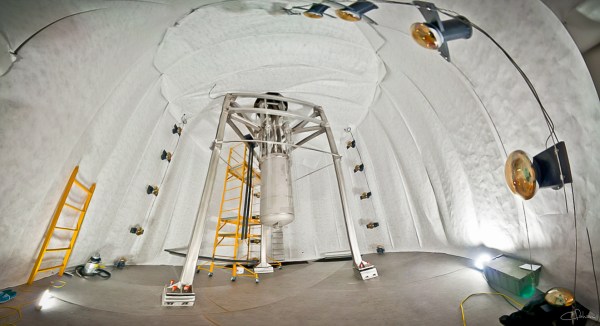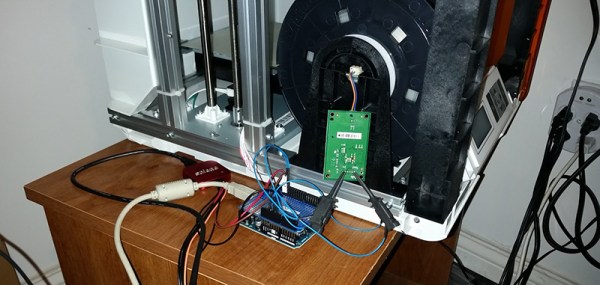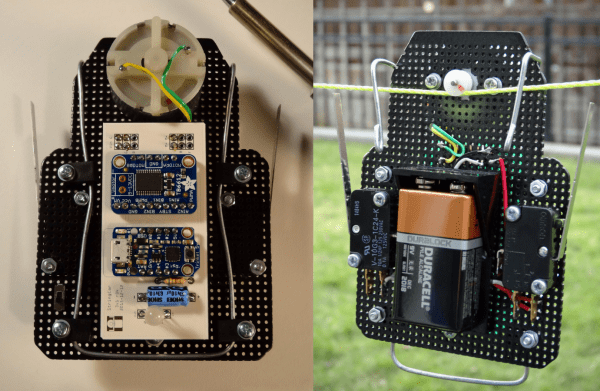The Homestake Mine started yielding gold in 1876. If you had asked George Hearst, the operator at the time, if the mine would someday yield the secrets of the universe I bet he would have laughed you out of the room. But sure enough, by 1960 a laboratory deep in the mine started doing just that. Many experiments have been conducted there in the five and a half decades since. The Large Underground Xenon (LUX) experiment is one of them, and has been running is what is now called the Sanford Underground Research Facility (SURF) for about four years. LUX’s first round of data was collected in 2013, with the experiment and the rest of the data slated to conclude in 2016. The method, hardware, and results wrapped up in LUX are utterly fascinating.
Day: January 12, 2016
Hacking Chipped 3D Printer Filament On The Da Vinci Printer
XYZ Printing has been selling 3D printers for years now with one very special feature not found in more mainstream printers. They’re using a chipped filament cartridge with a small chip inside each of their proprietary filament cartridges, meaning you can only use their filament. It’s the Gillette and ink jet model – sell the printer cheap, and make their money back on filament cartridges.
Last week at CES, XYZ Printing introduced their cheapest printer yet. It’s called the da Vinci Mini, a printer with a 15x15x15 cm build volume that costs only $269. Needless to say, a lot of these will be sold. A lot of people will also be disappointed with chipped filament cartridges in the coming months, so here’s how you defeat the latest version of chipped filament.
A little bit of research showed [WB6CQA] the latest versions of XYZ Printing’s filament uses an NFC chip. Just like the earlier EEPROM version, the latest spools of filament just store a value in memory without any encryption. [WB6CQA] pulled a board from the printer, connected it up to a logic analyzer, and checked out the data sheet for the NFC chip, giving him access to the data on the filament chip.
After running a few prints and comparing the data before and after, [WB6CQA] found a few values that changed. These values could be written back to their previous values, effectively resetting the chip in the filament and allowing third party filament to be used in this printer. It’s a kludge, but it works. More effort will be needed to remove the need to capture data with logic analyzers, but we’re well on our way to chipless filament on da Vinci printers.
String Racing Robots Are Here !
This could be the start of a new thing. [HarpDude] showed off his String Car Racers over on the Adafruit forum. It’s like a small model cable car on caffeine. String up enough of them and go head to head racing with others.
A motor with a small pulley runs over a length of string stretched between 2 posts. Below the pulley, acting as a counterweight balance, is the rest of the racer. A Trinket board, motor driver, 9V battery and a pair of long lever micro switches to detect end of travel. The switches also help reverse the motor. A piece of galvanized wire acts as a guide preventing the String Car from jumping off the string. And discovering the benefits of a micro-controller design, as against discrete TTL/CMOS, old timer [HarpDude] added two operational modes via software. “Pong”, where the String Car keeps going back and forth over the string until it stops of (battery) exhaustion. The other mode is “Boomerang” – a single return trip back and forth.
We are guessing the next upgrade would be to add some kind of radio on the car (ESP8266 perhaps) and build an app to control the String Car. That’s when gaming could become fun as it opens up possibilities. One way to improve performance would be to add two “idler” pulleys in line with the main drive pulley, and then snake the string through the three of them. Now you know what to do with all of those old motors you’ve scavenged from tape drives, CD drives and printers. Let the Games begin!
Thanks [Mike Stone] for tipping us off on this.














